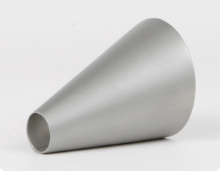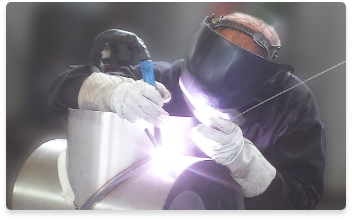


- Butt welding fittings
- bends
- T- X- Y- pieces
- T- and Y-bends
- reducers
- caps and heads
- collars
- branch saddles
- orbital fittings
- ANSI / ASME
- Industrial valves
- ball valves
- actuators
- drain cocks
- gate valves
- globe valves
- non-return valves
- Y-strainers
- control technology
- Flanges
- welding neck flanges
- threaded flanges
- blind flanges
- plate flanges
- loose plate flanges
- collars
- flange-fittings
- ANSI/ ASME
- other
- Systems
- TEEKAY
- Victaulic
- press fittings
- quick couplings
- clamp connections
- cutting rings
- DIN 11864/ DIN 11853
- railing construction
- Beverage fittings
- unions
- fittings
- pipe clamps
- Tri-Clamp
- valves & cocks
- flange connections
- inspection glasses
- filter & strainers
- spray balls

inspection glass flange SGFL




inspection glass flange DIN 28120/A
The weld-in and weld-on flange sockets for round inspection glass plates conform
in terms of design and dimensions to the design guidelines in DIN 28120.
When the block flange is properly welded in place, the flange thickness conforming to the DIN
standard guarantees torsion-free mounting of the inspection glass plate.
The load-bearing capacity the built-in inspection glass plate depends on the amount of care
taken when tightening the bolts (evenly in a criss-cross pattern).
The maximum operating temperature is 150 °C when soda lime glass according to
DIN 8902 is used, and is 280 °C when borosilicate glass according to DIN 7080 is used.
It also depends on the quality of the seals used.
Installation:
After welding the block flange on the container wall or in the container, the
block flange gasket, the inspection glass plate, the cover flange gasket, and the cover flange
put in place and with bolted to the block flange equipped with stud bolts using the nuts.
extended product description
Stainless steel other inspection glass flanges DIN 28120
inspection glass flange SGFL

The weld-in and weld-on flange sockets for round inspection glass plates conform
in terms of design and dimensions to the design guidelines in DIN 28120.
When the block flange is properly welded in place, the flange thickness conforming to the DIN
standard guarantees torsion-free mounting of the inspection glass plate.
The load-bearing capacity the built-in inspection glass plate depends on the amount of care
taken when tightening the bolts (evenly in a criss-cross pattern).
The maximum operating temperature is 150 °C when soda lime glass according to
DIN 8902 is used, and is 280 °C when borosilicate glass according to DIN 7080 is used.
It also depends on the quality of the seals used.
Installation:
After welding the block flange on the container wall or in the container, the
block flange gasket, the inspection glass plate, the cover flange gasket, and the cover flange
put in place and with bolted to the block flange equipped with stud bolts using the nuts.
This view is not optimized for mobile devices.
You can change back to desktop view.
This view is not optimized for mobile devices.
You can change back to desktop view.



